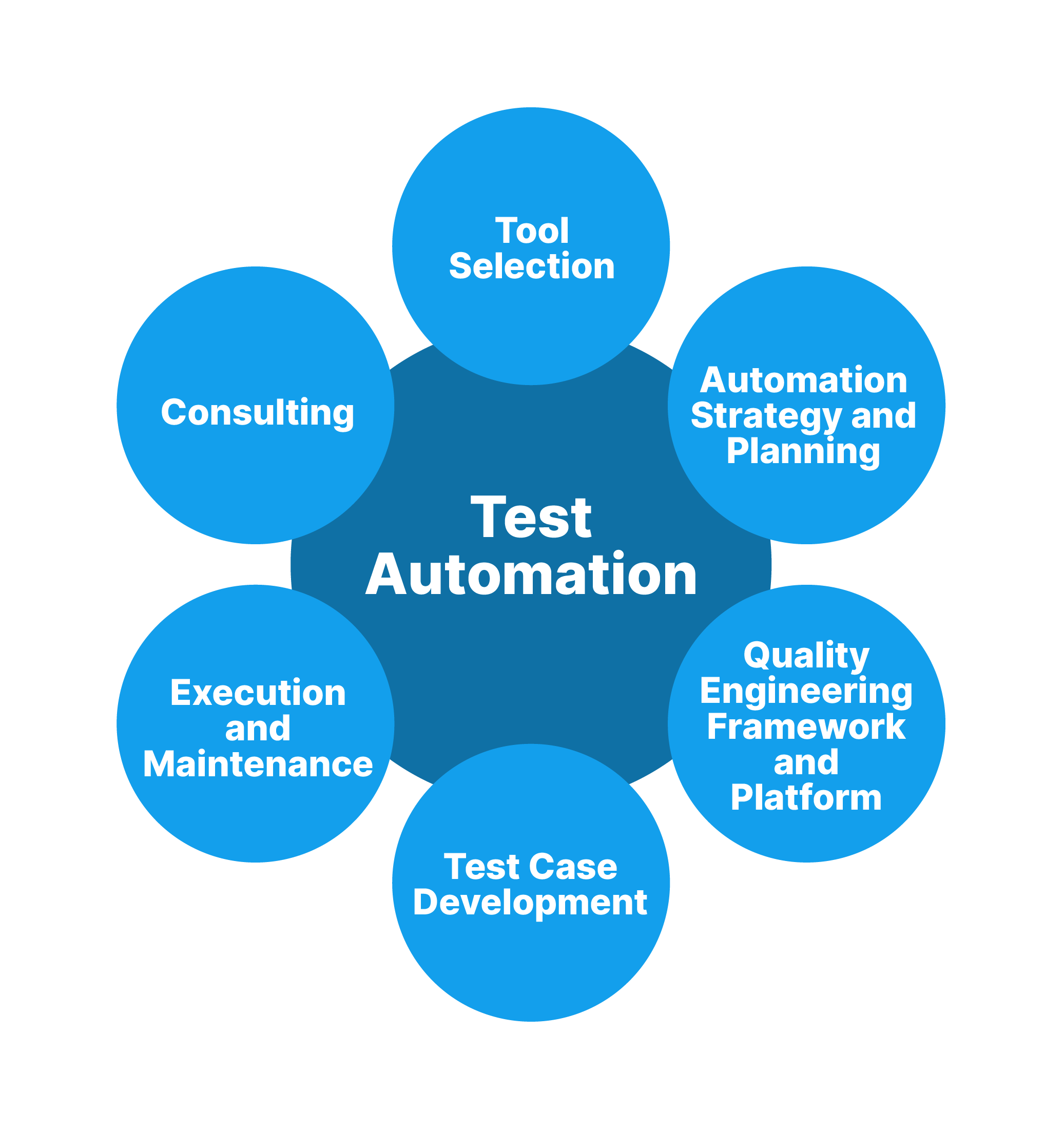Choosing the Right Tools for Effective Automation Testing Solutions
Choosing the Right Tools for Effective Automation Testing Solutions
Blog Article
From Guidebook to Automated Screening: A Comprehensive Overview to Transitioning Efficiently and Effectively
In the realm of software application testing, the shift from guidebook to automated processes has actually come to be a significantly important change for organizations seeking to boost efficiency and accuracy in their testing methods. As technology proceeds to breakthrough, the requirement for efficient and seamless automated testing techniques has never been much more important. The journey from handbook to automated testing is not without its difficulties, yet when approached strategically and with a clear strategy in mind, the benefits can be considerable - automation testing. In this comprehensive guide, we will certainly discover crucial actions and considerations essential for an effective shift, from the preliminary choice of devices to the combination of automation into existing workflows. Remain tuned to reveal the understandings that will assist lead the method for a smoother and a lot more efficient testing process.
Benefits of Automated Checking
Automated testing offers various benefits, enhancing performance and accuracy in software growth processes. One main benefit is the significant decrease in screening time. Automated examinations can be run simultaneously on multiple devices and operating systems, substantially accelerating the screening phase contrasted to hands-on screening. This boosted efficiency enables faster feedback on the quality of the software application, allowing designers to determine and attend to issues promptly.
Moreover, automated testing ensures a higher degree of precision in detecting problems. Consistency in screening is also boosted, as automated examinations carry out the same actions precisely each time they are run.
Picking the Right Devices

First of all, analyze your purposes and needs. Understand the range of your project, the technologies entailed, and the capability of your group. This analysis will certainly assist you determine the features and capabilities you call for in your screening devices.
Second of all, think about the compatibility of the devices with your existing systems and processes. Seamless integration with your current software development lifecycle is necessary to ensure a smooth change to automation.
Additionally, examine the scalability and versatility of the devices. As your testing needs advance, the tools need to be able to adapt and accommodate adjustments successfully.
Lastly, consider the assistance and neighborhood around the devices. Robust assistance and an energetic user neighborhood can provide important sources and aid when applying automated testing. By carefully taking into consideration these elements, you can pick the right tools that align with your demands and established the phase for a successful change to automated screening.
Composing Efficient Test Manuscripts

When crafting examination manuscripts, it is necessary to consider the details requirements of the software application being evaluated and guarantee that the manuscripts address all essential capabilities. Clear and detailed calling conventions for examination scripts and examination cases can boost readability and maintainability. Additionally, integrating error handling systems within the test scripts can aid in determining and addressing concerns promptly.
Moreover, organizing test manuscripts right into modular elements can boost reusability and scalability, decreasing redundancy and boosting performance in test manuscript upkeep. Routine evaluations and updates to evaluate manuscripts are essential to keep speed with advancing software application demands and capabilities. By following these principles, testers can create durable and reliable test manuscripts that add considerably to the success of automated screening processes.
Integrating Automation Into Workflows
Effective integration of automation tools into existing process improves and enhances processes performance within software growth cycles. When including automation into operations, it is crucial to recognize repeated jobs that can be automated to save time and decrease human error. By effortlessly integrating automated testing devices like Selenium or Appium right into the software growth lifecycle, groups can attain faster feedback on code adjustments, causing quicker bug discovery and resolution. This integration enables continual screening throughout the development process, guaranteeing that any kind of problems are recognized early, causing higher software program top quality. Furthermore, automation can be used to trigger examinations automatically after each code devote, giving immediate validation and maximizing testers to focus on more complicated circumstances. Proper assimilation of automation devices calls for collaboration between growth, screening, and procedures teams to establish a unified workflow that enhances their explanation effectiveness and efficiency in delivering top quality software program items.
Ensuring a Smooth Shift
Successfully transitioning to automated testing includes precise planning and mindful implementation to minimize interruptions and take full advantage of efficiency in the software application advancement procedure - automation testing. To guarantee a smooth transition, it is vital to begin by performing a complete analysis of the existing screening procedures and determining areas where automation can bring one of the most significant benefits. Engaging with all stakeholders early on while doing so, consisting of developers, testers, and job managers, is critical for amassing support resource and buy-in for the automation effort
Interaction is crucial during this shift stage. Clear communication of the goals, advantages, and expectations of automated testing assists to handle any type of resistance or worries that might emerge. Additionally, offering sufficient training and resources for staff member to upskill in automation devices and methods is crucial for making certain an effective change.

Final Thought
In final thought, transitioning from handbook to automated testing provides countless benefits, including enhanced performance and dependability. By choosing the ideal tools, writing reliable examination scripts, and integrating automation seamlessly right into process, organizations can ensure a successful and smooth shift. It is necessary to welcome automation as a valuable asset in software program screening procedures to boost overall high quality and efficiency.
In the world of software application testing, the change from handbook to automated procedures has become a significantly vital change for organizations seeking to improve efficiency and precision in their testing methods. Automated examinations can be run simultaneously on several tools and running systems, drastically speeding up the testing stage contrasted to manual testing. Consistency in testing is likewise boosted, as automated tests implement the exact same steps why not find out more exactly each time they are run.To make certain the effective implementation of picked screening tools, the creation of reliable examination manuscripts plays a vital function in validating the performance and efficiency of automated procedures - automation testing. By following these principles, testers can produce robust and effective examination manuscripts that contribute substantially to the success of automated screening procedures
Report this page